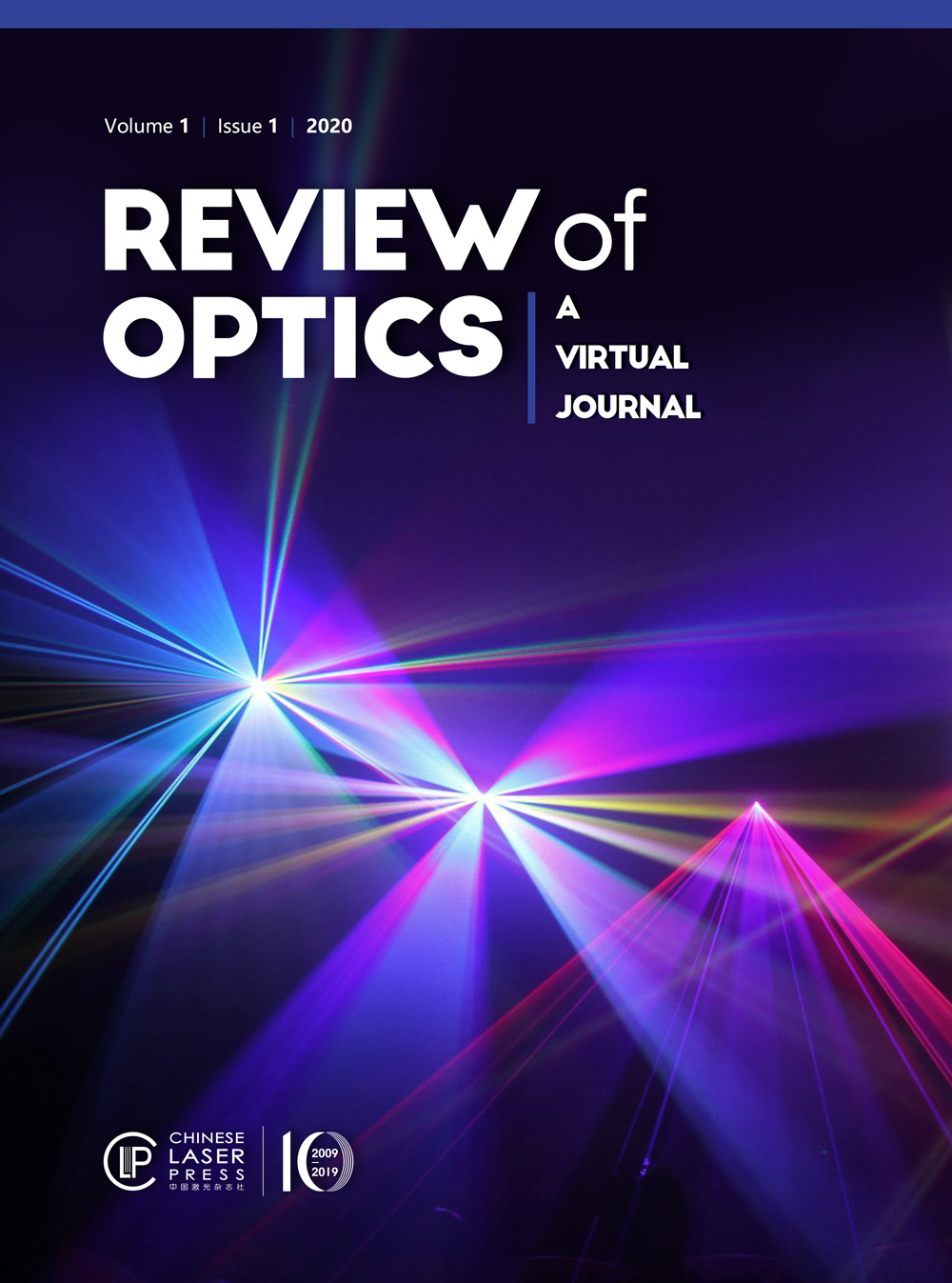Journals >Review of Optics: a virtual journal
- Publication Date: Feb. 10, 2020
- Vol. 18 Issue 2 023601 (2020)
Terahertz science and technology promise many cutting-edge applications. Terahertz surface plasmonic waves that propagate at metal–dielectric interfaces deliver a potentially effective way to realize integrated terahertz devices and systems. Previous concerns regarding terahertz surface plasmonic waves have been based on their highly delocalized feature. However, recent advances in plasmonics indicate that the confinement of terahertz surface plasmonic waves, as well as their propagating behaviors, can be engineered by designing the surface environments, shapes, structures, materials, etc., enabling a unique and fascinating regime of plasmonic waves. Together with the essential spectral property of terahertz radiation, as well as the increasingly developed materials, microfabrication, and time-domain spectroscopy technologies, devices and systems based on terahertz surface plasmonic waves may pave the way toward highly integrated platforms for multifunctional operation, implementation, and processing of terahertz waves in both fundamental science and practical applications. We present a review on terahertz surface plasmonic waves on various types of supports in a sequence of properties, excitation and detection, and applications. The current research trend and outlook of possible research directions for terahertz surface plasmonic waves are also outlined.
Terahertz science and technology promise many cutting-edge applications. Terahertz surface plasmonic waves that propagate at metal–dielectric interfaces deliver a potentially effective way to realize integrated terahertz devices and systems. Previous concerns regarding terahertz surface plasmonic waves have been based on their highly delocalized feature. However, recent advances in plasmonics indicate that the confinement of terahertz surface plasmonic waves, as well as their propagating behaviors, can be engineered by designing the surface environments, shapes, structures, materials, etc., enabling a unique and fascinating regime of plasmonic waves. Together with the essential spectral property of terahertz radiation, as well as the increasingly developed materials, microfabrication, and time-domain spectroscopy technologies, devices and systems based on terahertz surface plasmonic waves may pave the way toward highly integrated platforms for multifunctional operation, implementation, and processing of terahertz waves in both fundamental science and practical applications. We present a review on terahertz surface plasmonic waves on various types of supports in a sequence of properties, excitation and detection, and applications. The current research trend and outlook of possible research directions for terahertz surface plasmonic waves are also outlined.
.- Publication Date: Jan. 07, 2020
- Vol. 2 Issue 1 014001 (2020)
In the near future, single-molecule surface-enhanced Raman spectroscopy (SERS) is expected to expand the family of popular analytical tools for single-molecule characterization. We provide a roadmap for achieving single molecule SERS through different enhancement strategies for diverse applications. We introduce some characteristic features related to single-molecule SERS, such as Raman enhancement factor, intensity fluctuation, and data analysis. We then review recent strategies for enhancing the Raman signal intensities of single molecules, including electromagnetic enhancement, chemical enhancement, and resonance enhancement strategies. To demonstrate the utility of single-molecule SERS in practical applications, we present several examples of its use in various fields, including catalysis, imaging, and nanoelectronics. Finally, we specify current challenges in the development of single-molecule SERS and propose corresponding solutions.
In the near future, single-molecule surface-enhanced Raman spectroscopy (SERS) is expected to expand the family of popular analytical tools for single-molecule characterization. We provide a roadmap for achieving single molecule SERS through different enhancement strategies for diverse applications. We introduce some characteristic features related to single-molecule SERS, such as Raman enhancement factor, intensity fluctuation, and data analysis. We then review recent strategies for enhancing the Raman signal intensities of single molecules, including electromagnetic enhancement, chemical enhancement, and resonance enhancement strategies. To demonstrate the utility of single-molecule SERS in practical applications, we present several examples of its use in various fields, including catalysis, imaging, and nanoelectronics. Finally, we specify current challenges in the development of single-molecule SERS and propose corresponding solutions.
.- Publication Date: Feb. 26, 2020
- Vol. 2 Issue 1 014002 (2020)
- Publication Date: Feb. 28, 2020
- Vol. 2 Issue 1 014003 (2020)
The year 2019 marks the 10th anniversary of the first report of ultrafast fiber laser mode-locked by graphene. This result has had an important impact on ultrafast laser optics and continues to offer new horizons. Herein, we mainly review the linear and nonlinear photonic properties of two-dimensional (2D) materials, as well as their nonlinear applications in efficient passive mode-locking devices and ultrafast fiber lasers. Initial works and significant progress in this field, as well as new insights and challenges of 2D materials for ultrafast fiber lasers, are reviewed and analyzed.
The year 2019 marks the 10th anniversary of the first report of ultrafast fiber laser mode-locked by graphene. This result has had an important impact on ultrafast laser optics and continues to offer new horizons. Herein, we mainly review the linear and nonlinear photonic properties of two-dimensional (2D) materials, as well as their nonlinear applications in efficient passive mode-locking devices and ultrafast fiber lasers. Initial works and significant progress in this field, as well as new insights and challenges of 2D materials for ultrafast fiber lasers, are reviewed and analyzed.
.- Publication Date: Dec. 24, 2019
- Vol. 8 Issue 1 01000078 (2020)
About the Cover
Review of Optics: a virtual journal, started in 2019, is a virtual review journal, and it contains high-quality review articles from journals that published by Chinese Laser Press independently or along with its partners. Review of Optics is published quarterly. It aims to provide readers an alternative way to quickly look through high quality review papers. The scope of Review of Optics covers the full area of optics and photonics and relevant interdisciplinary topics, and meanwhile is in accordance with its source journals: Advanced Photonics, Chinese Optics Letters, High Power Laser Science and engineering and Photonics Research.







